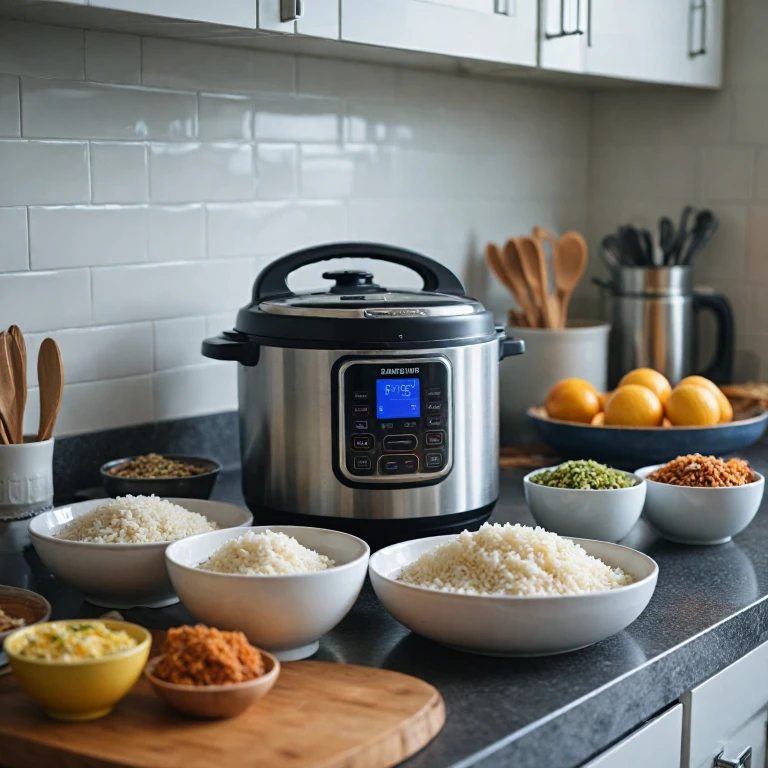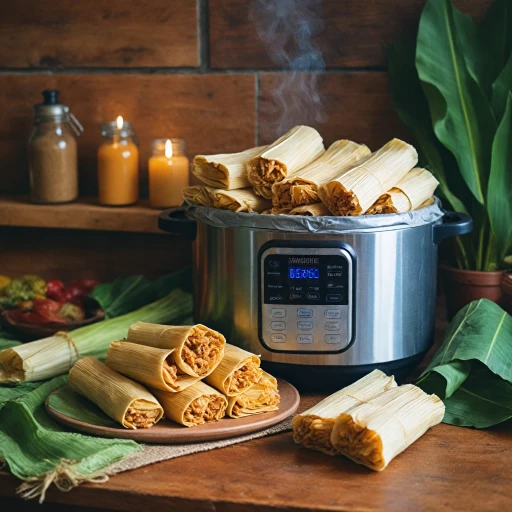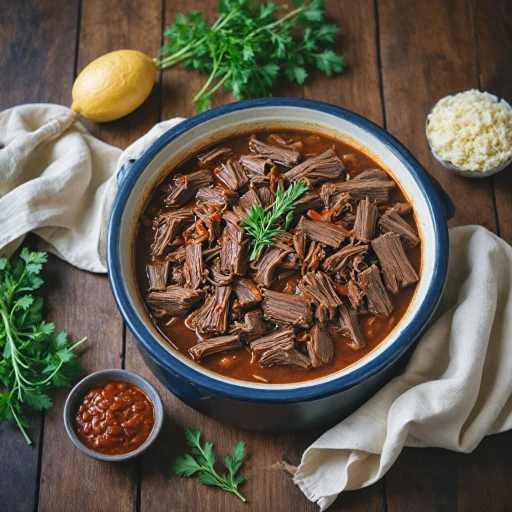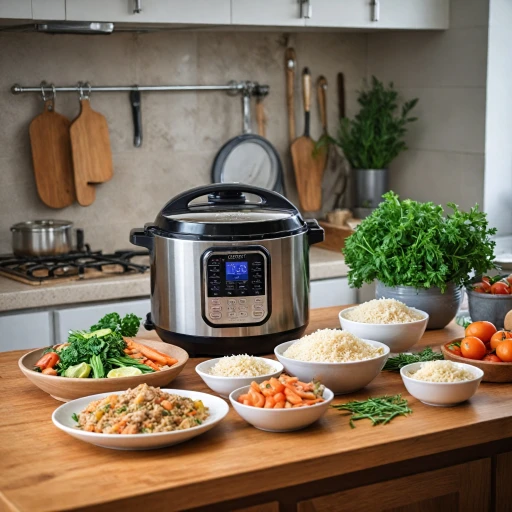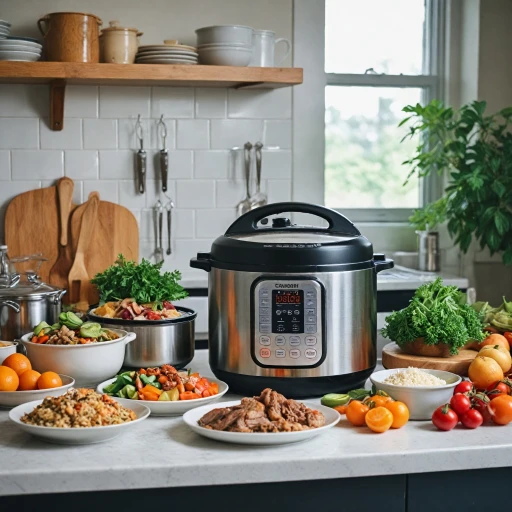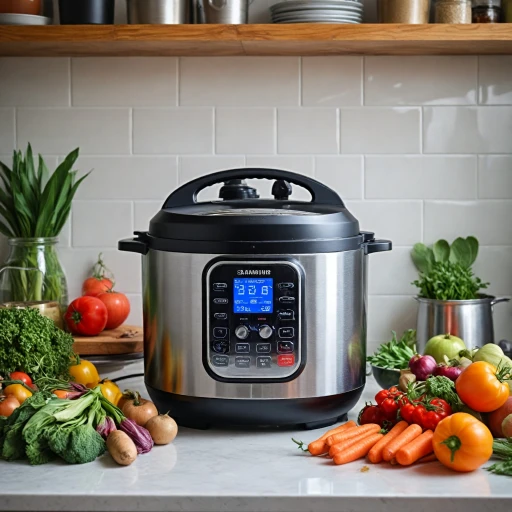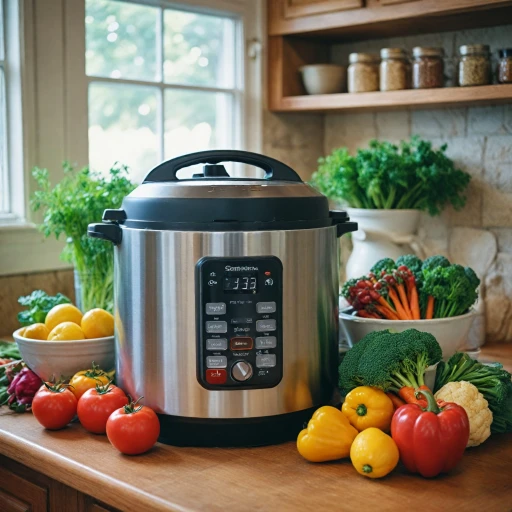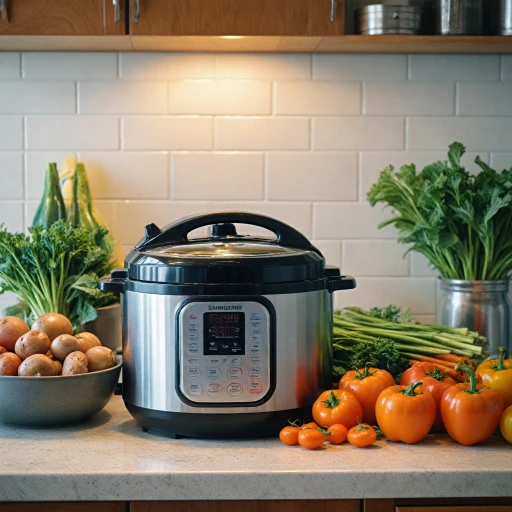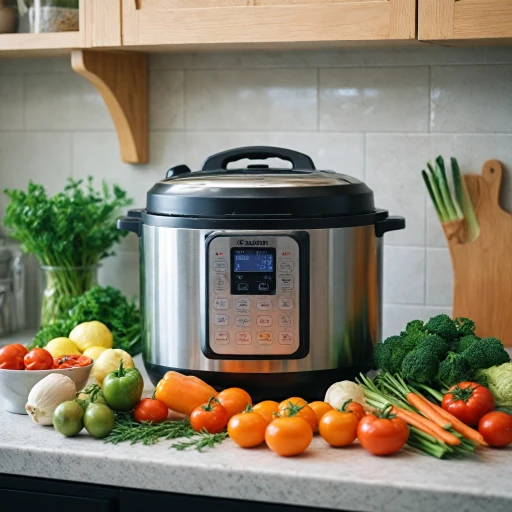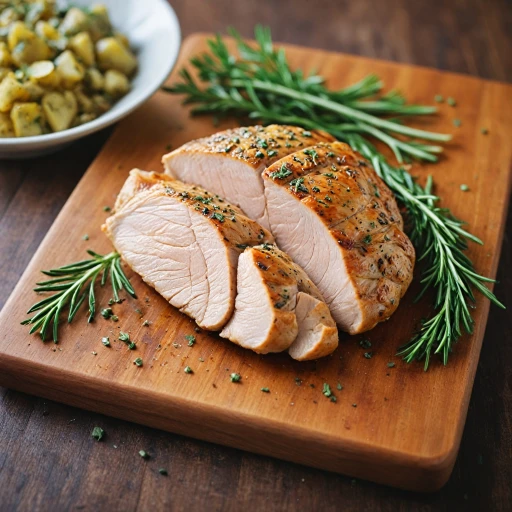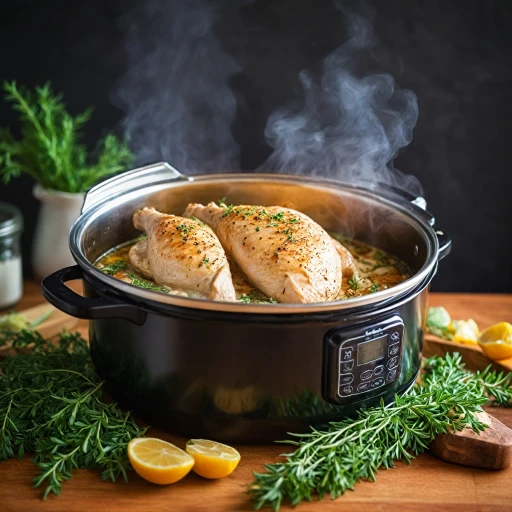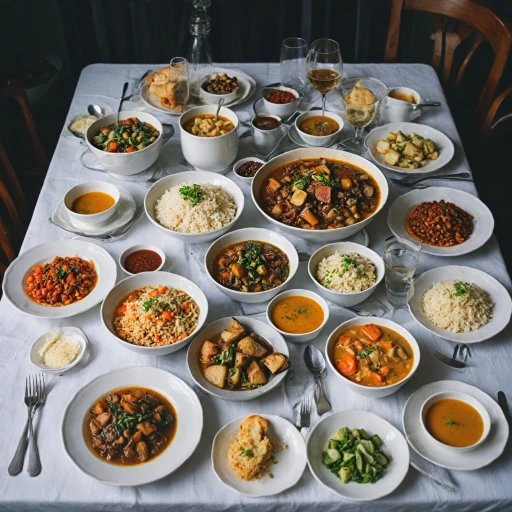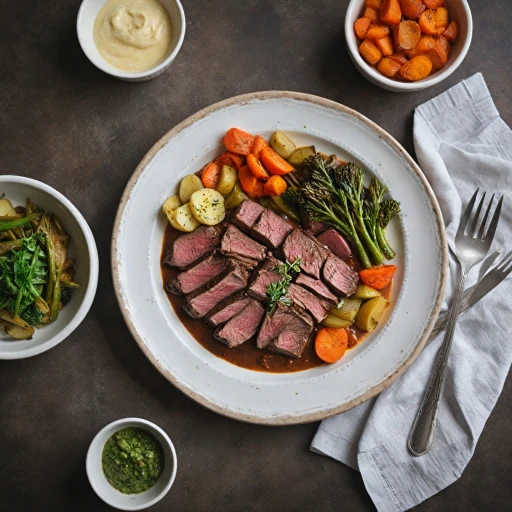
Understanding Your Electric Pressure Cooker
Getting Acquainted with Your Pressure Cooker
Owning an electric pressure cooker is like having a sous-chef in your kitchen, especially when it comes to cooking rice. This versatile appliance allows you to cook white rice efficiently and consistently by delivering perfect results with minimal effort. Before you dive into cooking aromatic rice dishes, it's essential to familiarize yourself with your pressure cooker. Understanding its features—such as its timer, pressure release valves, and settings—can significantly impact your cooking experience. Whether you own an instant pot or another brand of pressure cooker, these features might vary, hence knowing your device specifics is critical. One of the key components you'll often interact with is the pressure release valve. This small but mighty feature allows the steam to escape after cooking, ensuring that the rice remains fluffy while preventing overcooking. Also, familiarize yourself with the different pressure settings, which typically include options like low, medium, and high pressure. For cooking white rice, the high-pressure setting is usually applied, ensuring that the grains cook evenly within a short span of time. For those new to pressure cookers or uncertain about how to best utilize them, mastering rice cooking with an instant pot can be a great starting point. Explore recipes that match your tastes, whether you prefer your rice as a simple side dish, the base of a hearty meal, or something with enhanced flavor and texture. Understanding how your electric pressure cooker operates not only helps in cooking perfect rice but also paves the way for experimenting with various types of rice—be it long grain, short grain, or even brown rice. Each type requires slight modifications in water to rice ratios, cooking times, and pressure settings, ensuring each grain comes out the way you like it.Choosing the Right Type of White Rice
Choosing the Right Grain for Your Meal
When it comes to cooking white rice in an electric pressure cooker, selecting the appropriate grain variety is important. Each type of white rice has its own unique texture and flavor, influencing the final dish's outcome. Here's a quick guide to help you make the best choice:
- Long Grain White Rice: Known for its slender and elongated shape, long grain white rice tends to stay separate and fluffy after cooking. It's a great option if you're aiming for a side dish to complement a main course.
- Short Grain White Rice: This variety is more plump and round. It often results in a stickier texture, which works perfectly for dishes like sushi or rice pudding.
- Brown Rice: While not white, it is worth mentioning as an alternative if you're looking for something more nutritious. It requires a longer cooking time and extra water.
Once you've decided on the type, the amount of rice to water ratio is the next consideration. Typically, a 1:1 ratio is ideal, meaning one cup of rice to one cup of water, but this may vary based on personal preference and the chosen grain type.
Fine-tuning your choice of grain will contribute significantly to achieving the perfect pot of rice that matches your meal plan. For additional insights, explore the guide on mastering the rice setting on your Instant Pot.
As you move forward with your rice recipe, these foundational choices will align seamlessly with the step-by-step instructions and flavor enhancement tips shared in subsequent sections.
Step-by-Step Guide to Cooking White Rice
Setting Up Your Electric Pressure Cooker for Perfect Results
To achieve that fluffy, perfectly cooked white rice using your electric pressure cooker, it's essential to understand the specific intricacies involved in the cooking process. Here's a comprehensive step-by-step guide that ensures a seamless cooking experience.Ingredients and Preparation
Begin by gathering your ingredients and preparing your cooker. For standard servings, you'll typically need:- 1 cup of white rice (consider the variety as discussed before)
- 1 cup of water, which may vary based on the rice type
Assembling the Ingredients
With your pressure cooker set up, start by placing the rinsed rice and water directly into the pot. It's vital to ensure the lid is properly secured to prevent any unwanted steam release. Check the seal and make sure that the pressure release valve is set to "sealing."Programming the Cooker
Set your electric pressure cooker to "High Pressure" mode. For long grain white rice, the cooking time is typically 3 to 4 minutes. Short grain rice might require a slight adjustment, but starting with this timeframe often yields positive outcomes.Pressure and Release
Once cooking time elapses, a proper pressure release is critical. Allow the pressure to naturally release, which generally takes about 10 minutes. This process ensures that your grains finish cooking evenly and absorb the full flavors.Finishing Touches
Upon completion, open the lid carefully. Fluff the rice with a fork; avoid using a spoon as it may damage the grains. For those interested in adding taste nuances, refer back to the tips on enhancing flavor. For additional inspiration and recipes tailored for your pressure cooker, there are many delightful options to explore. This basic structure, however, ensures a reliable starting point for preparing flawless white rice in your electric pressure cooker.Troubleshooting Common Issues
Overcoming Common Issues in Rice Cooking
Cooking white rice in an electric pressure cooker can sometimes present challenges. Whether you're using an instant pot or another brand, understanding these potential issues can help you achieve the perfect consistency of your grain white rice.- Excess Water: If your rice is consistently coming out mushy, this might be due to too much water. Ensure that the rice water ratio is accurate. Typically, for every cup rice, use one cup of water or one and a quarter cups for long grain varieties.
- Undercooked Rice: If your rice is crunchy, your cooking time might be too short. Using the pressure cook setting on high pressure adjusts the cooking time to ensure that the grains are properly cooked. Around five to six minutes under high pressure should suffice for most white rice recipes.
- Sticking to the Pot: To prevent sticking, consider adding a teaspoon of oil or butter with your rice and water before starting the pressure cooker. This should help in releasing the cooked grains more easily.
Enhancing Flavor and Texture
Infusing Rich Flavors into Your Rice
Transforming basic white rice into a culinary delight involves a few creative touches that enhance both flavor and texture. The electric pressure cooker provides a reliable base for achieving consistent results, but adding a personal touch can make your dish truly stand out. Here are some simple yet effective ways to elevate your rice:- Using Flavorful Liquids: Instead of cooking your rice with plain water, consider using chicken stock or vegetable broth. This can infuse your rice with deep, savory notes as it absorbs the liquid during the pressure cooking process.
- Aromatic Enhancements: Implementing aromatic ingredients like garlic, onion, or even a touch of ginger can transform the profile of your dish. Sautée these briefly in the pot before adding the rice and liquid for a fragrant experience.
- Herbs and Spices: Fresh herbs such as cilantro or parsley added after the cooking release can bring a burst of freshness. Incorporating spices like turmeric or saffron can also add vibrant color and earthy tones to your white rice.
- Fat Additions: A dollop of butter or a sprinkle of olive oil added before serving can provide a rich, silky finish, enhancing both texture and flavor.
- Toasting the Grains: Prior to adding water, toasting the white rice grains in a bit of oil or butter can impart a nutty flavor, giving your recipe an additional layer of complexity.
- Citrus Zest: A zest of lemon or lime added right before serving can bring a bright and tangy twist to your dish, balancing flavors beautifully.
Cleaning and Maintenance Tips
Keeping Your Electric Pressure Cooker Pristine
Maintaining the cleanliness of your electric pressure cooker not only ensures a satisfying cooking experience every time but can also extend the life of your device. To handle white rice and other dishes with ease, follow these simple cleaning tips after each use.- Immediate Clean-Up: After using the pressure cooker, allow it to cool before disassembling the parts. Immediately rinsing the pot and lid will prevent rice, grains, and other food particles from hardening and sticking.
- The Inner Pot: The pot, where the white rice cooks, should be washed with warm soapy water. Use a soft sponge to avoid scratching the surface, as scratches can cause rice to stick and complicate cleaning.
- The Sealing Ring: The rubber ring, crucial for maintaining high pressure, can retain food odors. Remove it, and wash it separately. If the odor persists, consider soaking it in a vinegar solution.
- The Lid: The pressure cooker lid can be washed under running water and should also be disassembled to reach every nook and cranny. Pay close attention to the vent pipe and float valve as they're essential for accurate pressure release.
- Exterior Wiping: Use a damp cloth to wipe down the exterior of the pressure cooker, ensuring you don't let water seep into electrical components.
- Regular Checks: Routinely inspect your cooker for any wear and tear, particularly around the seals and pressure valves. Having a well-functioning pot will enhance the outcome of every rice recipe, whether you're aiming for fluffy long grain or sticky short grain.
- Storage: Ensure all components are thoroughly dry before reassembling. Store them with the lid inverted over the pot to allow air circulation, preventing any moisture buildup.
